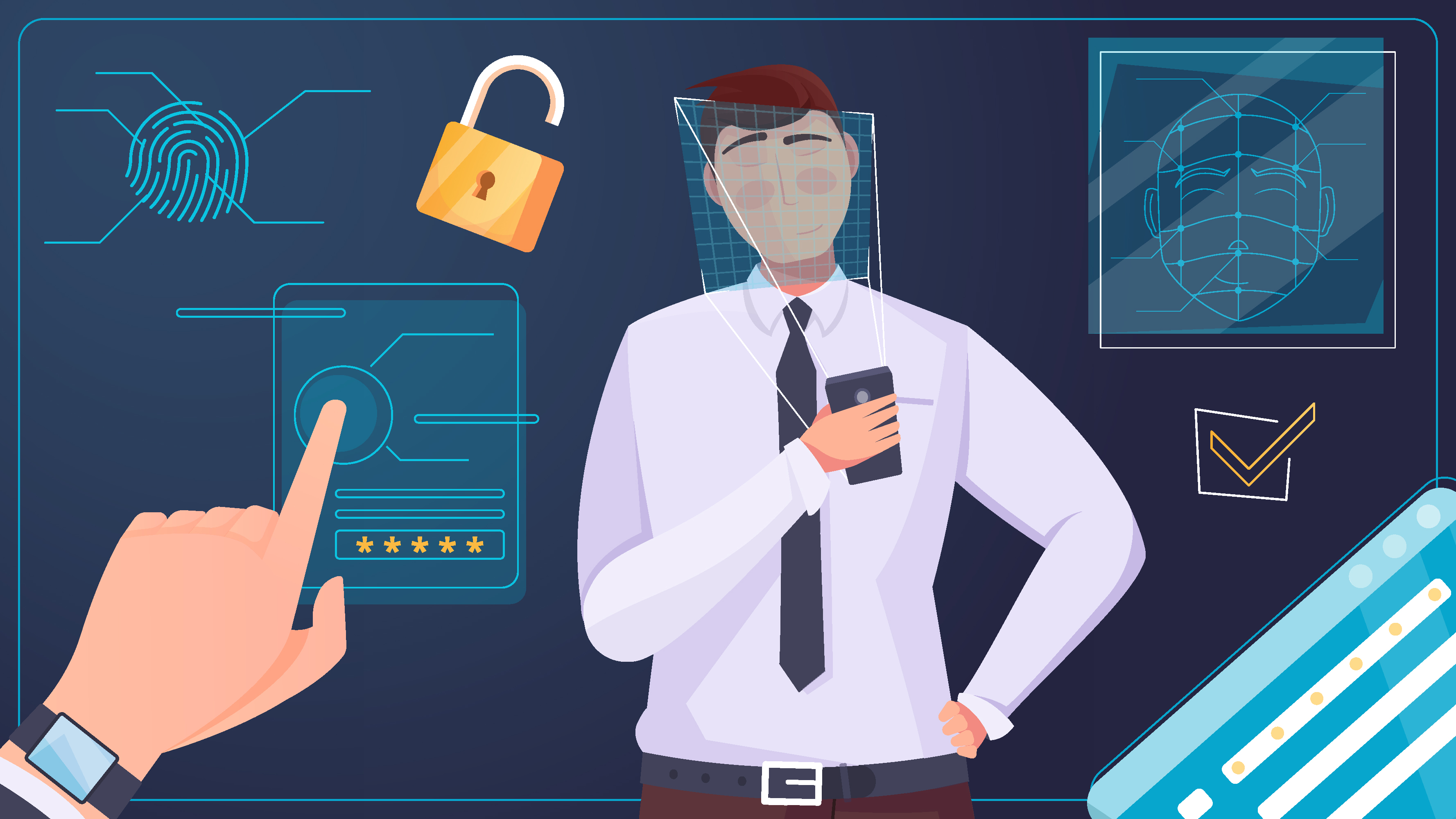
by Rebeca | Apr 12, 2023 | Customer, cybersecurity, Resources, soffid
Identity and Access Management (IAM) is a set of processes and technologies used to manage and protect an organization’s data and resources. IAM is a fundamental component of information security and is essential for protecting customer, employee, and business partner data.
We are talking about a systematic approach to managing user identities and access to organizational resources. This includes identifying and authenticating users, authorizing users to access resources, managing user accounts, and monitoring user access.
Why are good management and strategy so important?
Identity and Access Management is particularly important in an environment where organizations face increasingly sophisticated threats. Cybercriminals can use a bunch of techniques to gain unauthorized access to information systems.
Therefore, a good IAM strategy includes password management, multi-factor authentication, and privilege management. Password management is specially important, as weak or compromised passwords are one of the primary ways that cybercriminals can gain unauthorized access.
A solid IAM approach also aids in adhering to statutory and regulatory standards. Organizations must take steps to guarantee that only individuals with the proper authorization have access to private information in order to comply with laws and regulations relating to data privacy and the protection of personal information.
By following these guidelines, you can avoid penalties and punishments by implementing an IAM strategy.
In conclusion, Identity and Access Management is crucial for safeguarding the information and assets of a business. An organization may safeguard against uninvited assaults and ensure that only authorized people have access to the resources and data they need to carry out their duties by developing and implementing an effective IAM policy.
Furthermore, this can improve the efficiency and productivity of employees, as well as enhance the trust and reputation of the company in the eyes of its customers.
Soffid provides all the services needed to implement a successful IAM implementation, ensuring the system meets all stability, scalability and performance requirements.
Let’s talk

by Rebeca | Apr 5, 2023 | Uncategorized
It is increasingly essential to have a convergent platform that protects the company against cyberattacks. It is crucial to protect assets to make it very difficult or almost impossible for hackers to obtain all the company’s data. The threat landscape does not give organizations and users a break, nor does the global situation in which any geopolitical, economic, or labour tension will increase the risk of new cyberattacks arising.
Recent reports indicate that ransomware attacks against merchants are the most prevalent. In over half of the cases, cybercriminals managed to encrypt the files of the attacked companies. In addition, for almost all retailers, the attack affected their capability to perform and resulted in a loss of business or revenue.
Skills to deal with attacks.
Common skills to face cyberattacks Professionals who make protection a reality have strong abilities and knowledge to develop a security network against cyberattacks.
These skills are:
Technical expertise
It is necessary to have a strong technical understanding of programming languages, operating systems, databases, and computer networks. This will make it easy to spot any weaknesses and put the right security measures in place.
Risk Evaluation
To determine the extent and create mitigation and recovery strategies in the event of a security breach, they must be able to assess and analyse computer security risks.
Problem-Solving
They should be quick and effective in locating the source of an issue and coming up with a workable solution that addresses it in the least amount of time.
Critical Analysis
They ought to be able to evaluate challenging circumstances. Making choices that protect systems and data requires the capacity to weigh a variety of data and possibilities.
Successful Communication
It’s crucial to be able to express complicated technical ideas to anyone, professionals included, clearly and concisely.
Project Management
Establishing and meeting deadlines, controlling spending, and coordinating work teams all depend on having the ability to plan, carry out, and monitor projects.
Strategic Approaches
Create and put into practice computer security measures that safeguard systems and data.
Aside from these fundamental abilities, it’s important to keep in mind that in a world where trends and technology advance at the speed of light, curiosity and a desire to learn are basic character traits.
Shall we talk?
Sources:
(1) ciberseguridadpyme.es

by Rebeca | Mar 29, 2023 | cybersecurity, News
Cybersecurity is one of the most significant concerns facing businesses and organizations due to the constantly changing cyber world, so we’ve rounded up some of the main challenges facing cybersecurity today, as well as those that are brewing for the future.
Growth of cybercrime
According to a report by Cybersecurity Ventures, global cybercrime costs are foreseen to grow by 15% per year from 2021 to 2025 and could reach $10.5 trillion per year.
Shortage of talent
There is a global cybersecurity workforce gap of 3.4 million and 70% of organizations have unfilled cybersecurity positions, according to the (ISC) Cybersecurity Workforce Study.
Meanwhile, the World Economic Forum, in conjunction with several companies, launched an online education platform aimed at individuals and organizations called Cybersecurity Learning Hub. The aim of this project is to train, and improve the skills of, security professionals so that more people can score quality jobs in this vibrant field.
Inclusion and diversity
Higher levels of inclusion and diversity are associated with greater innovation, performance and productivity, all being key for any organization’s growth. Needless to say, attracting underrepresented groups to cybersecurity can help lower the lack of skilled security professionals.
Remote and hybrid working
The digital transformation accelerated by the COVID-19 pandemic has also made it clear to companies that they need to prioritize security. Organizations around the world with remote and hybrid work, can no longer rely solely on hardening their inner perimeter using their on-premises technology infrastructure.
Dark web
Monitoring the dark web helps cyber-defenders prevent attacks, understand how fraudsters and cybercriminal groups think, what vulnerabilities are being traded, what malicious tools the bad actors use to access organizations’ systems or to defraud people, or what information about an organization is circulating in these underground markets.
New cybercrime tactics
Trends such as the growth of new forms of social engineering force organizations to keep up with new and evolving attack scenarios and transmit this knowledge to their staff.
In a recent wave of attacks, a potential victim first received an email to learn, for example, that their subscription to a service is about to renew. In the call, the victim is tricked into installing malware on the system that can often spread to other machines.
Security in the crypto ecosystem
Consumers, businesses and governments are all finding new ways to use Bitcoin and other cryptocurrencies – and so are cybercriminals. Crypto scams and cyberattacks against various stakeholders in the crypto ecosystem have shown the vulnerability of the industry to hacks. It is no wonder that security-related challenges in the cryptocurrency world also often make headlines.
Ransomware
From 2020 to 2021 the number of ransomware attacks doubled and ransomware is still a scourge as we almost head into 2023. Indeed, if we look at the evolution of this type of threat over the last five years, it’s clear that there is still a long way to go before the ransomware business stops injecting money into the cybercrime industry.
The metaverse
Projections about the adoption of the metaverse show that by 2026, 25% of the world’s population will spend at least one hour a day in this virtual world. Therefore, security in the metaverse is a challenge for the future.
These shared virtual worlds for socializing, playing games and where various assets will circulate will undoubtedly give rise to a large number of attacks and scams. In addition, technological innovations are not always developed with security and privacy considerations in mind as the time to market takes precedence instead.
Education and awareness
A fundamental challenge that the industry will always face is better education and awareness of existing cybersecurity risks. With the high penetration of the internet and technology globally, the attack surface has expanded considerably in the past decade or two.
The above is by no means an exhaustive list of the challenges lying ahead for cybersecurity. However, even this high-level perspective shows that dealing with any of the challenges will require work and effort from many stakeholders – not only from the cybersecurity industry.
Shall we talk?
Sources:
- Welivesecurity.com
- Wire19.com
Image by David Bruyland in Pixabay

by Rebeca | Mar 21, 2023 | cybersecurity
Attacks targeting employees are the main cause of avoidable breaches
Cybersecurity breaches have become increasingly prevalent in recent years, with cybercriminals constantly evolving their tactics to infiltrate sensitive data. While there are many factors that contribute to these breaches, the main cause of avoidable breaches is attacks targeting employees.
Cybercriminals use social engineering tactics such as phishing, spear-phishing, and pretexting to trick employees into giving them access to sensitive information. These attacks are often disguised as legitimate emails or websites and can be challenging to detect without proper training.
To prevent avoidable breaches caused by employee-targeted attacks, organizations need to prioritize cybersecurity training for their employees. This training should educate employees on how to identify phishing emails, suspicious links, and other social engineering tactics used by cybercriminals to gain access to sensitive data.
In addition to employee training, organizations should implement multi-factor authentication (MFA) to prevent unauthorized access to sensitive information. MFA provides an extra layer of security by requiring employees to provide additional credentials, such as a one-time password or biometric authentication, in addition to their regular login credentials. This makes it much more difficult for cybercriminals to gain access to sensitive data, even if they have obtained an employee’s login credentials.
Regular security assessments can also help identify potential vulnerabilities in the organization’s security posture, enabling organizations to address them proactively before they can be exploited by cybercriminals. These assessments can be performed internally or by third-party security professionals and should be conducted regularly to ensure that the organization’s security is up-to-date and effective.
In conclusion, attacks targeting employees are the main cause of avoidable breaches, but organizations can prevent them by prioritizing cybersecurity training for their employees, implementing multi-factor authentication, and conducting regular security assessments. By taking these steps, organizations can protect their sensitive data from cybercriminals and safeguard their reputation and trust with customers. Ultimately, the security of an organization is only as strong as its weakest link, so it is critical that all employees are aware of the risks and trained to prevent them.
Shall we talk?
Image by Andrés Rodríguez in Pixabay

by Rebeca | Mar 15, 2023 | cybersecurity
Aligning security and business strategies
In today’s digital age, businesses face an ever-increasing risk of cyber-attacks. As a result, aligning security and business strategies has become critical to ensure that organizations can withstand potential cybersecurity threats.
Businesses need to prioritize cybersecurity as a crucial aspect of their overall strategy, rather than treating it as a separate entity. This approach will enable businesses to align their security and business strategies, ensuring that they can effectively manage cybersecurity risks while achieving their business objectives.
To align security and business strategies, businesses need to consider the following key areas:
- Establishing a security culture: Businesses must establish a security culture that emphasizes the importance of cybersecurity. This culture should be ingrained in all employees, from the top down, to ensure that everyone takes cybersecurity seriously and understands their role in protecting the organization’s digital assets.
- Risk assessment: Businesses need to conduct regular risk assessments to identify potential cybersecurity risks and threats. This assessment should consider the organization’s current security posture, potential vulnerabilities, and the impact that a cyber-attack could have on the business.
- Integrating cybersecurity into business processes: Cybersecurity should be integrated into all business processes, from product development to customer service. This approach will ensure that cybersecurity is not an afterthought, but rather a fundamental aspect of the business.
- Collaboration between IT and business teams: IT and business teams need to collaborate to align security and business strategies. IT teams can provide technical expertise, while business teams can provide a deep understanding of the organization’s objectives, enabling the development of a holistic cybersecurity strategy.
- Ongoing monitoring and improvement: Cybersecurity threats are continually evolving, making it essential to monitor and improve the organization’s security posture continuously. Regular assessments and testing can identify potential vulnerabilities, enabling organizations to proactively address them.
In conclusion, aligning security and business strategies is critical to ensure that organizations can effectively manage cybersecurity risks while achieving their business objectives. By establishing a security culture, conducting regular risk assessments, integrating cybersecurity into business processes, collaborating between IT and business teams, and ongoing monitoring and improvement, businesses can align their security and business strategies and effectively protect their digital assets.
Shall we talk?
Image by Gerd Altmann in Pixabay






